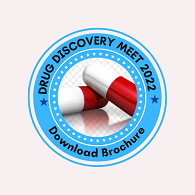Call for Abstract
Scientific Program
3rd International Conference on Pharmaceutical Research And Drug Discovery, will be organized around the theme “Insight and Practical Approaches of Drug and Pharmaceutical Research”
Drug Discovery meet 2022 is comprised of keynote and speakers sessions on latest cutting edge research designed to offer comprehensive global discussions that address current issues in Drug Discovery meet 2022
Submit your abstract to any of the mentioned tracks.
Register now for the conference by choosing an appropriate package suitable to you.
Biopharmaceutics is defined as the study of factors that influencing rate and amount of drug which reaches the systemic circulation and use of this information to optimize the therapeutic efficacy of the drug products. The process of movement of drug from site of administration to systemic circulation is called as absorption. The concentration of drug in plasma, onset of action, intensity and duration of response depend upon the bioavailability of drug from its dosage form. Bioavailability is defined as the rate and extent (amount) of drug absorption which indicates active effect. The biological medical product indulges in manufacturing or extraction or semi synthesizing the pharmaceutical drug product from biological sources. The biologic drug is manufactured in all the living system such as plant cells or animal cells, or microorganism. Most of these biologics are produced with the help of Recombinant DNA technology.

